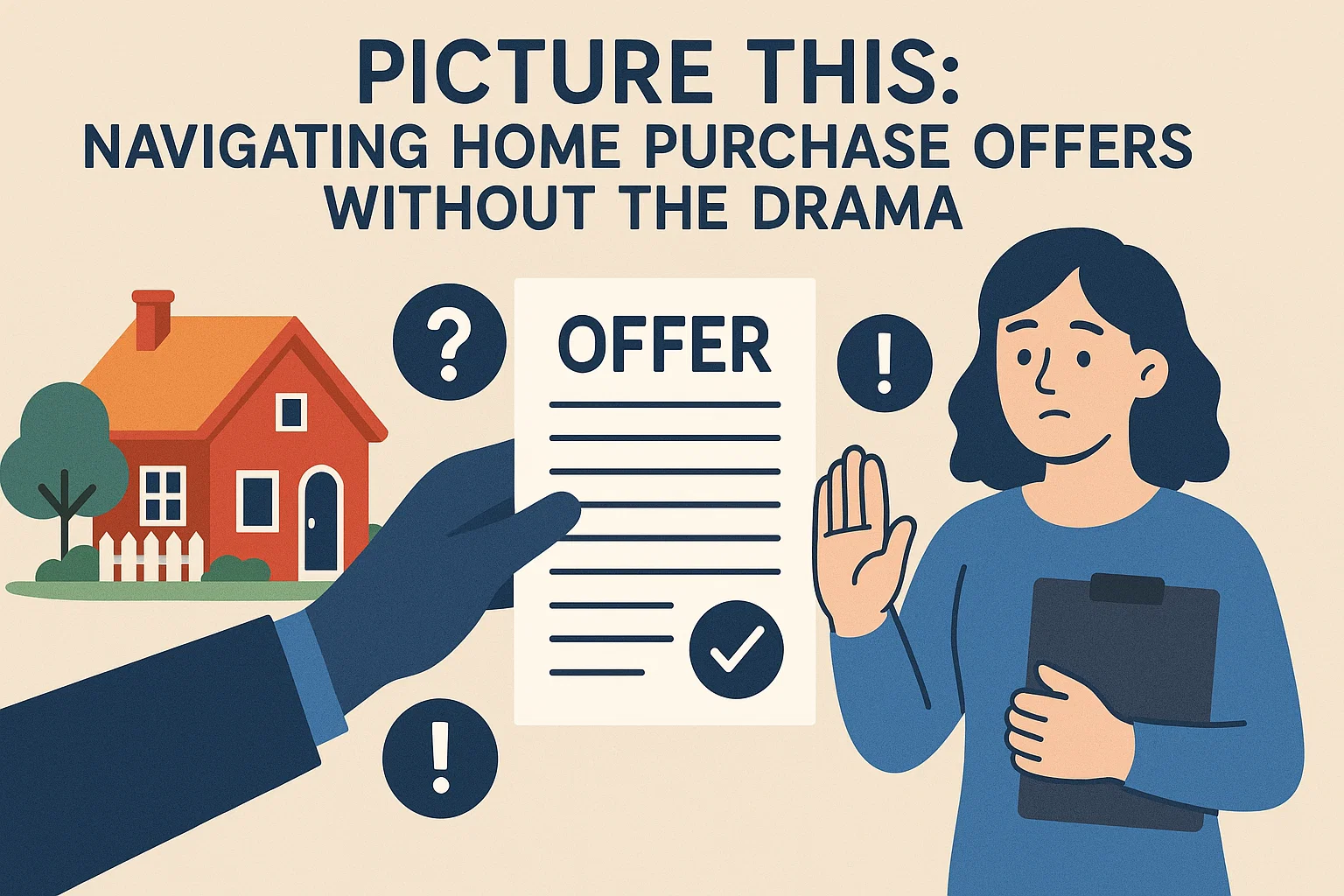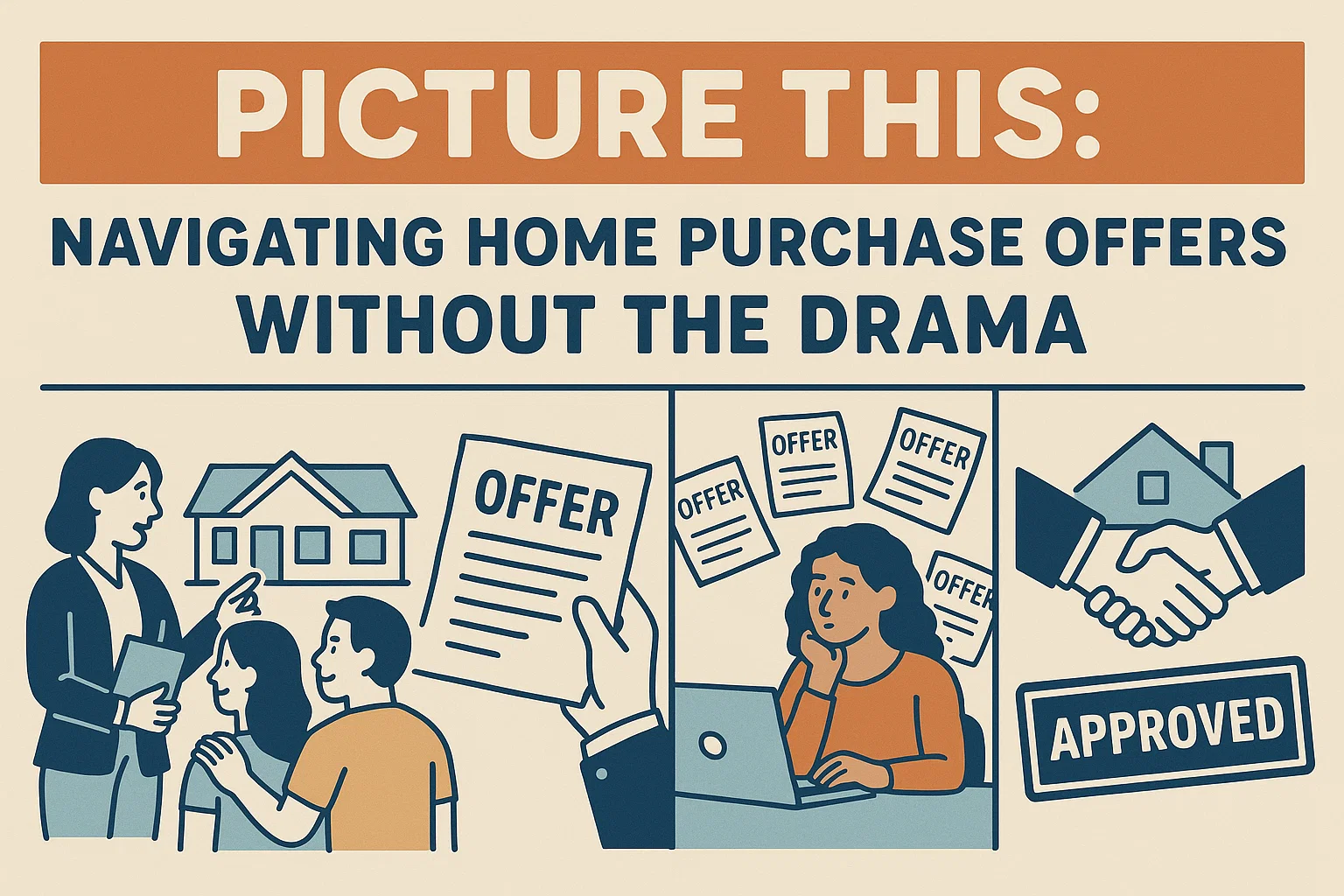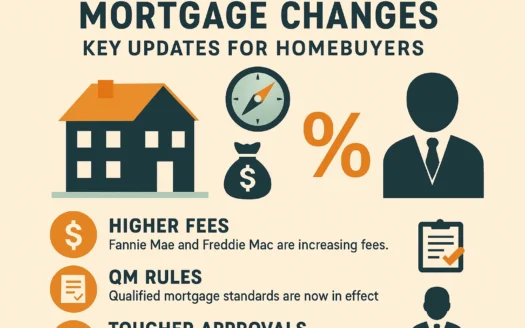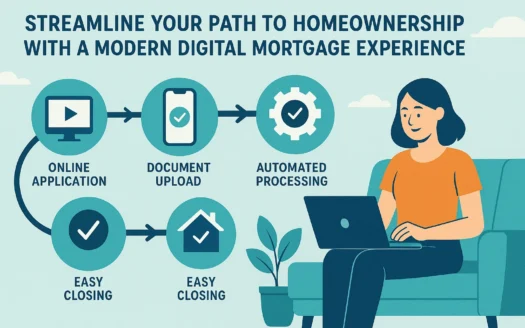Picture This: Navigating Home Purchase Offers Without the Drama

Picture This: You and Another Person Are Facing Each Other on a Stage…
Hands hovering over bright red buttons. You’ve both decided to make an offer on the same home, and now it just comes down to who hits the button first. Sound stressful? We think so. Thankfully, making an offer on a new home is less Family Feud and more like a college essay. Not the easiest task, but with careful planning, expert advice—and a little luck—you can set yourself up for success.
The Basics
The first step in making a purchase offer—also called a purchase agreement or letter of intent—is knowing what to expect. Here’s the general path:
- Develop your offer and present it to the seller in an official document.
- The seller accepts, declines, or counters.
- If accepted: Move forward with the purchase.
- If declined: Make a new offer or consider other homes.
- If countered: Review, then accept, decline, or counter again.
Once signed by both parties, the offer becomes a legally binding contract.
How to Write a Purchase Offer Letter
Here’s a breakdown of key components to include:
Monetary Offer
Consider the listing price, your budget, local market trends (use a comparative market analysis!), the seller’s motivation, and the home’s condition. Avoid maxing out your pre-approval amount, but skip lowball offers unless the situation warrants it (e.g., a motivated seller).
Earnest Deposit
This 1-5% good-faith payment shows commitment. Funds are held in escrow—not given directly to the seller—and terms for refunds or closing cost applications should be outlined if the deal falls through.
Down Payment
Typically 5-20% of the home’s cost, this signals financial readiness to the seller and impacts mortgage insurance and interest rates. Specify your financing method (e.g., VA loan) to clarify risk.
Contingencies
Protect yourself with clauses like:
- Disclosures: Let you adjust or withdraw based on revealed property issues.
- Home Inspection: Exit option if major flaws are found.
- Home Sale: Ensures you’re not stuck paying for two homes.
- Appraisal/Mortgage: Guarantees fair pricing and financing approval.
- Repairs/Title: Addresses damage or title disputes.
Keep contingencies necessary but concise to avoid spooking the seller.
Deadlines
Include response deadlines, contingency timelines (e.g., financing approval), and occupancy dates. Clarity prevents delays and holds parties accountable.
Additional Details
Cover property descriptions, included appliances, expense prorations (taxes, utilities), and concessions (e.g., seller-paid closing costs). A personal letter can help stand out in competitive bids.
What Comes Next?
Before sending:
- Review Thoroughly: Ensure accuracy and legality. Consider legal consultation.
- Negotiate: Be ready for counteroffers. Agents can guide responses.
- Celebrate (Briefly): Acceptance triggers appraisals, inspections, and final paperwork.
While the process is complex, working with professionals ensures nothing slips through the cracks. Keep your eyes on the prize: your future home.
Still searching for your dream home? Explore listings and resources at Pre-ConstructionHomes.com.




